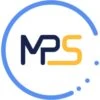Only a couple of years ago, hearing the words “education” or “learning” the majority of us pictured a classroom full of students in front of who a teacher is delivering a lecture. And if corporate training was mentioned, our imagination would have probably conjured up a vision of a large conference hall where employees are having a tiresome workshop for hours on end.
The deleterious onslaught of the global pestilence has rendered these traditional images obsolete, with both educators and trainees increasingly adopting the practices of remote e-learning. Even the most conservative representatives of the academia own up to the necessity of mastering the basics of working with Google classroom for schools and universities, while kids and teenagers who are naturally quicker in taking novelties in their stride are well-versed in all kinds of educational software applications, installing them on their gadgets.
Numerous standalone solutions that abound on the contemporary edtech market are certainly instrumental in addressing specific challenges confronting stakeholders of the learning process. However, if you canvass their opinions, all of them are sure to express the compelling need for integration of their efforts aimed at providing and consuming high-end educational services. And what is LMS (Learning Management System) but a high-tech response of savvy developers called to satisfy the requirements of teachers and students?
What is Learning Management Systems?
The definition of LMS describes it as a digital product (typically, LMS platform is a SaaS solution) that implements the educational process in its entirety. The purpose of a learning management system is to plan, create, and deliver educational content and training programs in a specific field with an opportunity to assess the progress and results. Lately, the meaning of learning management system has been broadened to include mobile apps that perform the same range of functions but can be accessed via smartphones and tablets.
Having considerable experience in this niche, we at Multi-Programming Solutions know that the most popular example of LMS would contain a core platform enabling a broad scope of operations with content and three interfaces that run inside a browser (for admins, instructors, and learners). The best learning management systems with an advanced set of features can be used for event management, automated performance test scoring, conducting live classrooms, file sharing, in-lesson chats, polling, awarding badges and certificates, etc.
How is LMS used? A teacher develops the contents of a course and uploads it to the system. Students join in, undergo the training they have selected, and get assessed by the teacher. Administrators manage the procedure, ensure its smooth operation, deal with complaints, automate notifications, and perform other back-office tasks.
This model promises numerous assets to people involved in e-learning.
What are Learning Management Systems’ Benefits?
Whether you are a business owner, a college student, or an employee aspiring to acquire new skills and competencies, LMS can be leveraged to your advantage in view of its evident perks.
Cost-Saving
This is the benefit of the learning management system that entrepreneurs value most. Instead of paying through the nose for the organization of different conferences or presentations where participants will be physically present or sending your employees to trainings and workshops, you just invest into building an LMS meaning to hold a virtual classroom or event. Naturally, the cost of learning management systems is not a bargain-price issue but it is in any case much lower than the expenses you would defray setting up offline get-togethers where rent, refreshments, and travel expenditures would amount to an outrageous sum.
Accessibility and Flexibility
Distances and time-zone discrepancies aren’t relevant for an e-learning management system so that you can bring together the best specialists in some realm from all over the world and people eager to learn from them. Moreover, all the training conducted in such a way doesn’t threaten to disrupt your regular workflow with participants joining in at their convenience. Besides, learners can choose their learning style and speed themselves (within sensible boundaries, of course) which effectively spells an individual approach in education.
Continuous Learning Promotion
The previous boon translates into this one. Being easily attainable, LMS-based e-learning webinars and workshops can be arranged more often than offline training sessions, which fosters the culture of continuous learning. People get used to frequent skill-building endeavors and develop acceptance of life-long (or at least career-long) education.
Content Consistency and Prompt Update
You can define the common goal for all participants and provide them with consistent and centralized course conveyance across multiple locations and workstations. In case any changes in this single-source content or methods of its delivery are necessary, they can be introduced on the spot, immediately aligning them with the shifting needs of the organization.
The Unlimited Gamut of Learning Materials and Activities
Any contemporary content type is LMS software-friendly. Modern teachers rely not only on texts and images but also on video, audio, multichannel, and even VR/AR technologies to get their message through to the audience. The latter can participate all together, in breakout rooms, or individually, they can use non-verbal feedback (virtual hand-raising, for instance) and voice their opinions in in-chats, while the teacher can share their screen with the students and poll them as to their preferences.
Involving all these techniques in different combinations, instructors can determine which of them work better in what case and design their training sessions correspondingly...


